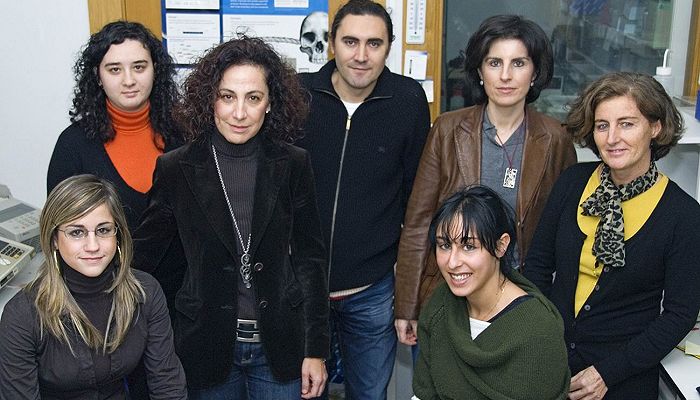A research team from the Leioa campus of the University of the Basque Country (UPV/EHU), and led by Ms Concepción de la Rúa, has reconstructed the history of the evolution of human population and answered questions about history, using DNA extracted from skeleton remains.
Knowing the history of past populations and answering unresolved questions about them is highly interesting, more so when the information is obtained from the extraction of genetic material from historical remains. An example is the necropolis at Aldaieta (Araba) where some of these mysteries about these peoples have been answered – thanks to the study of their DNA.

Aldaieta brings together certain important features which make this site a prime archaeological and historical record and its conservation an important task of restoration and study. In this vein, the group from UPV has undertaken a study of DNA in the necropolis at Aldaieta (Araba).
The researchers at the UPV/EHU have been studying the genetic material of ancient remains, extracted both from bones and teeth, in order to interpret the biological and social meaning of this necropolis. The study of ancient DNA is a field in which laboratory work is enormous for a number of reasons. On the one hand, in comparison with modern or current DNA, that extracted from the bones and teeth is quite degraded and is in very small quantities.
As a consequence, the risk of contamination is high. This is why, at all times the results obtained have to be authenticate and it has to be demonstrated that they are not due to contamination or handling/manipulation, but have genuinely been obtained from the samples.
The research work began with the extraction and subsequent analysis of DNA from the ancient remains (normally by the sequencing of mitochondrial DNA, a molecule inherited maternally) of each individual and in duplicate. Moreover, a third copy of the sample from each individual was sent to another laboratory and. finally, they compare all of them in order to distinguish between what is endogenous from what is the result of handling. Obviously, the results obtained from the same sample/individual have to tally in all the analyses in order to be reliable.
Interpretation of the settlement at Aldaieta
Despite the problems inherent working with ancient DNA, the methodology drawn up for the current work as well as the precautions and criteria of authentication undertaken have enabled reliable and verifiable results of the population buried at Aldaieta to be obtained.
Within the great homogeneity of the mitochondrial lines on the European continent, the genetic substrate of the population buried at Aldaieta falls within the variability of that expressed by current populations on the Cantabrian coast and Atlantic axis, thereby indicating the existence of genic flow between these human groups in ancient times.
Besides the characterisation of the mitochondrial genome, they have carried out the characterisation of the chromosome Y, using techniques focused on ancient DNA, an have shown the existence of family relationships within the necropolis, given that certain mitochondrial lines have a particular distribution, the grouping of individuals belonging to the same line having been discovered at nearby burial sites. Besides, there exists a significant differentiation gender wise, men having qualitatively and quantitatively more important funerary artefacts than women.
It is clear that the genetic analysis of skeleton remains, despite the labour-intensive work involved and the problem of authenticity of the results, has provided an essential contribution in the reconstruction of the biological history of human populations.






Comments